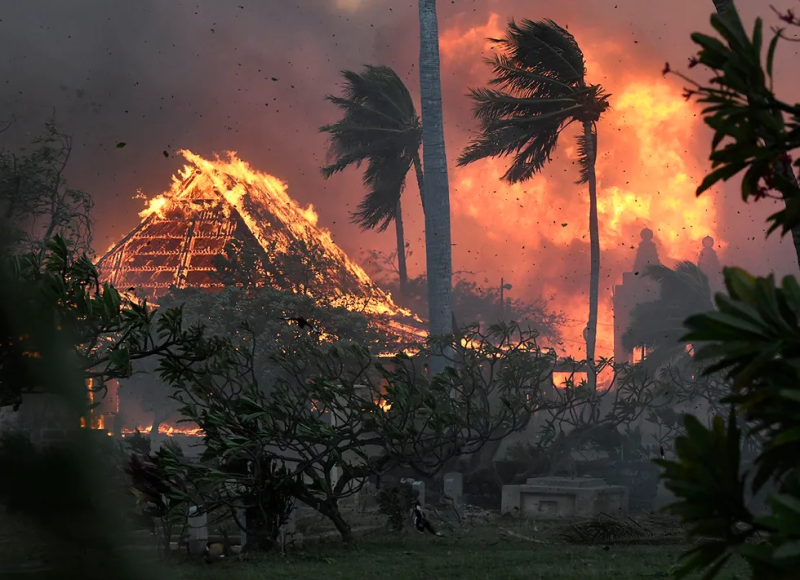'Sobering' data shows US set record for natural disasters, climate catastrophes in 2023
From storms to wildfires, it's already been a record catastrophic year for weather and climate disasters across the nation, and we've still got nearly four months to go.
As of Monday, the U.S. has endured a whopping 23 separate weather and climate disasters that have each led to at least $1 billion in damage, the National Oceanic and Atmospheric Administration said Monday.
That breaks the record of 22 set in 2020.
"These record-breaking numbers, during a year that is on track to be one of the hottest ever, are sobering and the latest confirmation of a worsening trend in costly disasters, many of which bear the undeniable fingerprints of climate change," said Rachel Cletus of the Union of Concerned Scientists, which was not involved in the NOAA report, in a statement.
More than 250 people have been killed in the disasters, NOAA said. The total cost of these events exceeds $57.6 billion.
Can’t see our graphic? Click here to reload.
The number of disasters did not include Hurricane Hilary, which affected parts of California and the Southwest in August. The damage totals for that storm are still being tabulated, NOAA said.
According to NOAA, the 23 events include:
- 18 severe weather events, including hail storms and tornadoes.
- Two flooding events.
- One tropical cyclone (Hurricane Idalia).
- One wildfire event.
- One winter storm event.

'Don't forget about us':Maui victims struggle one month after deadly fires
Disasters are increasing
From 1980 to 2022, the annual number of billion-dollar disasters, adjusted for inflation, averaged 8.1. Over the past five years, the U.S. has averaged 18 billion-dollar disasters a year.
Overall, NOAA said the U.S. has sustained 371 separate weather and climate disasters since 1980 where overall damage/costs reached or exceeded $1 billion (including consumer price index adjustment to 2023). The total cost of these 371 events exceeds $2.615 trillion.
The costliest year for weather disasters was 2017, NOAA said, with $383 billion in damage. This was because of a disastrous wildfire season in California along with Hurricanes Harvey, Irma and Maria.
NOAA began tabulating billion-dollar disasters in 1980.
'Couldn't believe it':Floridians emerge from Idalia's destruction with hopes to recover

A hot summer
If you live in any of these seven states – Louisiana, Texas, Florida, New Mexico, Washington, Oregon, Mississippi – it was among the top 10 hottest summers of your life. For the folks in Louisiana, it was the hottest summer on record, NOAA also said Monday.
NOAA's data goes back to 1880. NOAA defines summer as the three hottest months of the year: June, July and August.
Extreme heat's toll:Heat kills and maims. Here are some of its victims from across the US.
While Louisiana baked under its warmest summer on record, both Texas and Florida saw their second-warmest summers. Mississippi, New Mexico, Oregon and Washington all saw their top-10 warmest summers on record.
Overall, for meteorological summer (June 1 through Aug. 31), the average temperature for the contiguous U.S. was 73.0 degrees − 1.6 degrees above average − ranking as the nation’s 15th-hottest summer on record.
Contributing: Janet Loehrke/USA TODAY

Disclaimer: The copyright of this article belongs to the original author. Reposting this article is solely for the purpose of information dissemination and does not constitute any investment advice. If there is any infringement, please contact us immediately. We will make corrections or deletions as necessary. Thank you.






